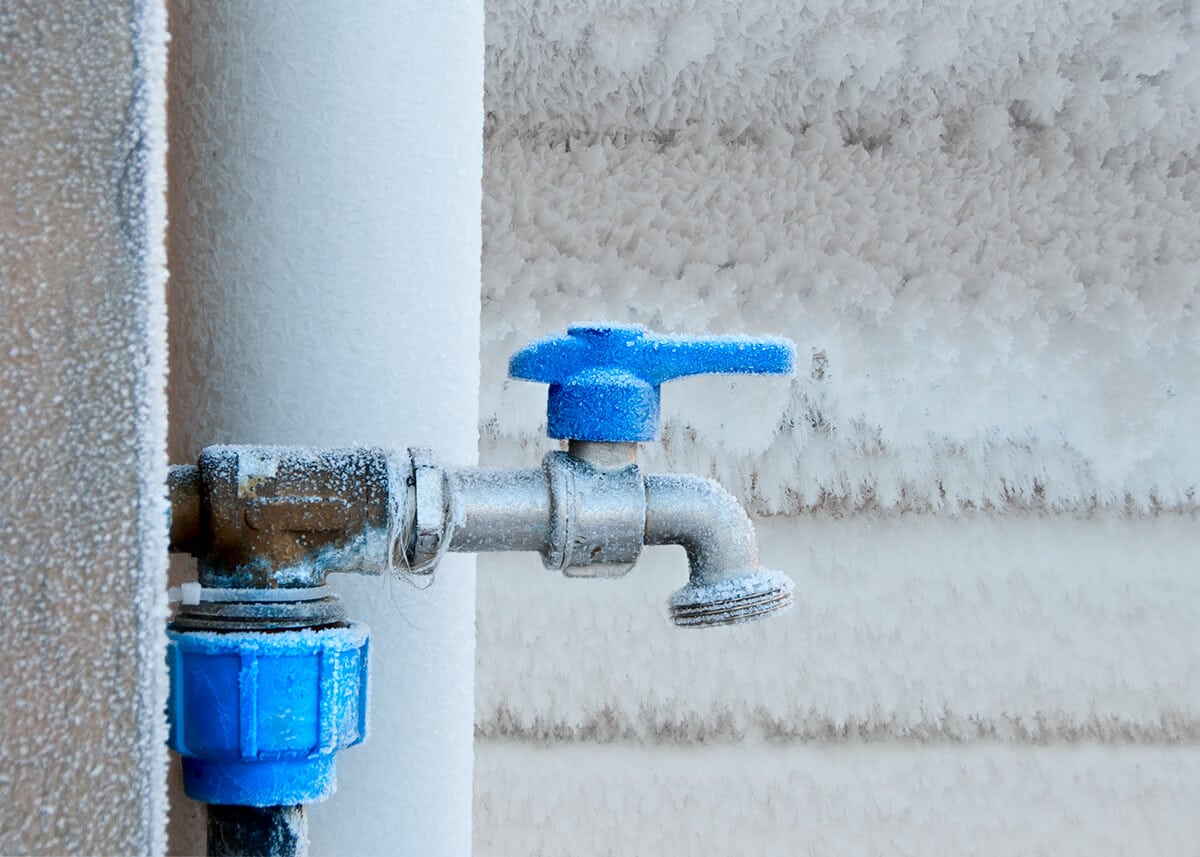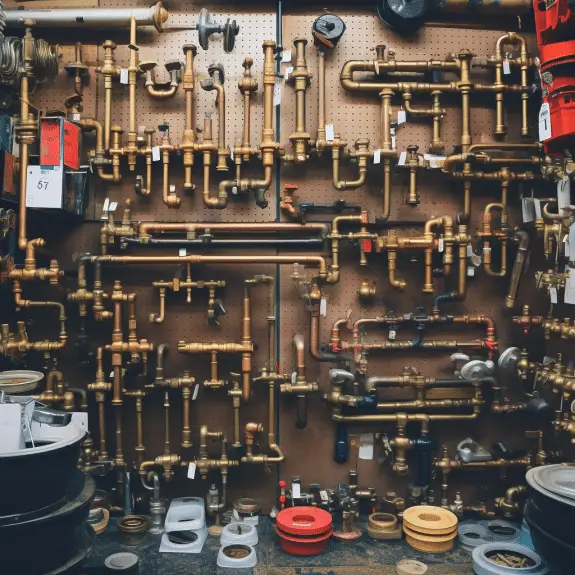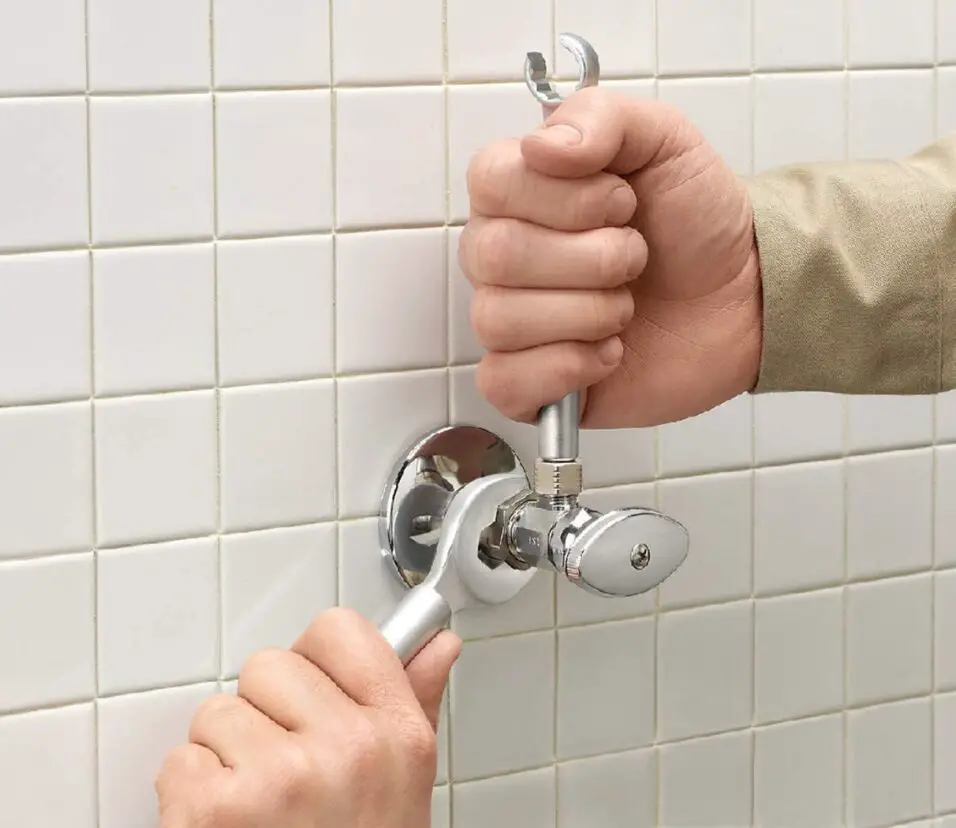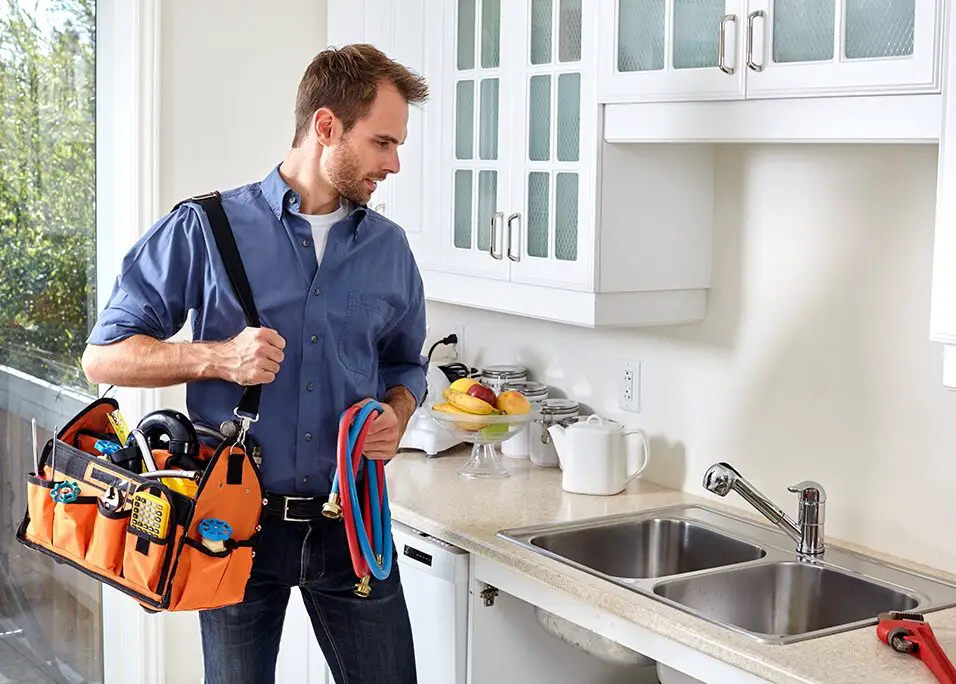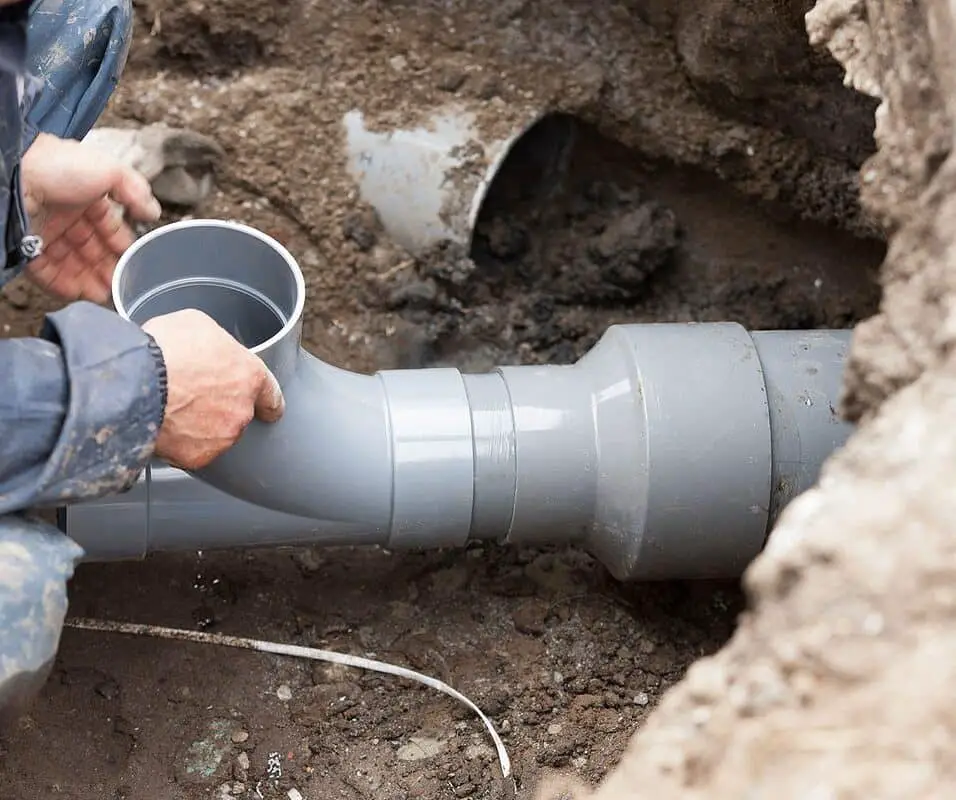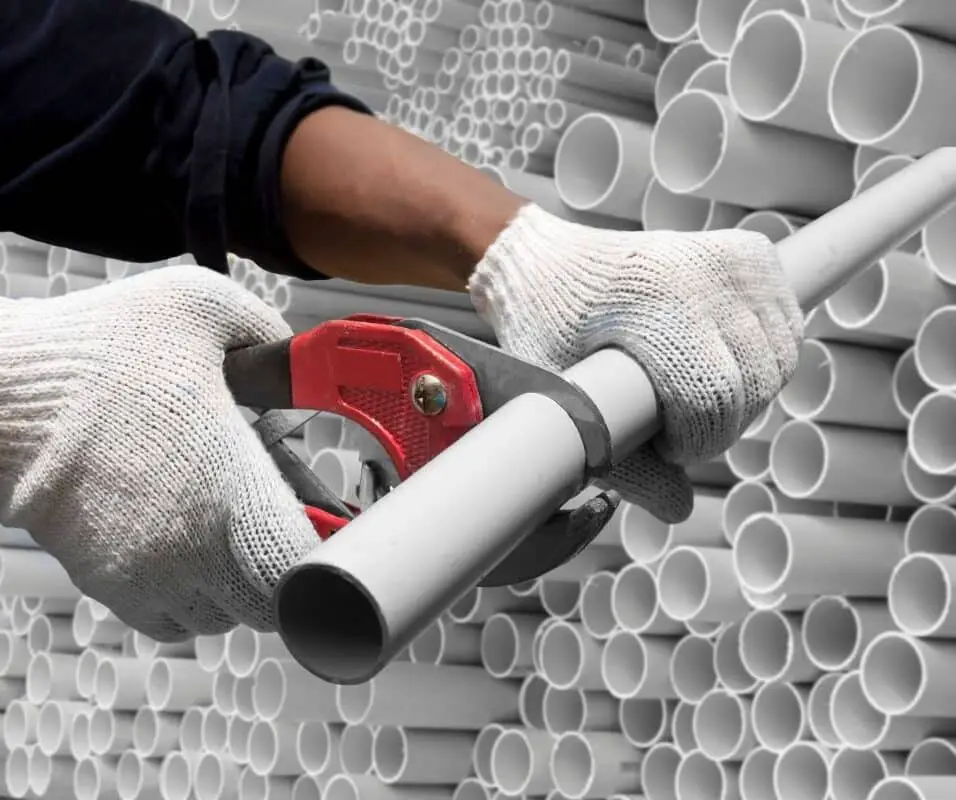How To Winterize A House Plumbing
Introduction
How To Winterize A House Plumbing: One crucial aspect of winterization is taking the necessary steps to protect the plumbing system from freezing temperatures. Frozen pipes can lead to costly repairs, water damage, and inconvenience. By winterizing your house plumbing, you can ensure the smooth functioning of your water supply and prevent any potential disasters.
To effectively winterize your house plumbing. By following these measures, you can safeguard your plumbing pipes, faucets, and other plumbing fixtures from the freezing temperatures and avoid any unpleasant surprises during the colder months. Winterizing your house plumbing is to locate all the vulnerable areas where pipes are exposed to cold air. These may include unheated basements, crawl spaces, garages, and exterior walls. Once identified, it is important to insulate these areas properly using insulation sleeves, heat tape, or foam insulation. This will provide a protective barrier against the freezing temperatures and help maintain a consistent and warm environment for your pipes.
Next, it is crucial to shut off the water supply to any exterior faucets and disconnect and drain all garden hoses. Leaving water trapped in exterior pipes can cause them to freeze and burst. It is also advisable to install frost-free faucets or faucet covers to further protect against freezing.
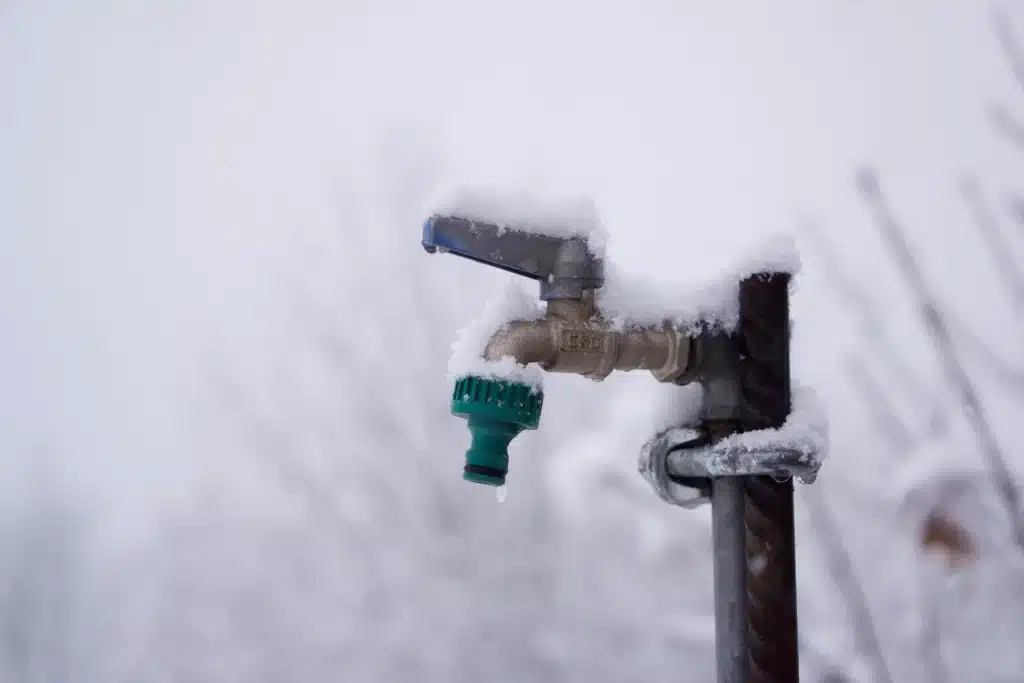
What Is Winterizing In Plumbing?
Winterizing pipes involves a series of steps that prepare a home’s interior and exterior plumbing to withstand extreme cold temperatures without freezing, therefore protecting against devastating pipe bursts and leaks.
Winterizing in plumbing refers to the process of preparing the plumbing system of a house or property for the colder winter months. The primary objective of winterizing is to protect the pipes, fixtures, and water supply from freezing temperatures, which can lead to burst pipes and extensive water damage.
When water freezes, it expands and exerts tremendous pressure on the pipes. This pressure can cause the pipes to crack, rupture, or burst, resulting in leaks and flooding when the ice thaws. Winterizing helps prevent this by taking proactive measures to keep the plumbing system insulated and warm.
One of the key steps in winterizing plumbing involves identifying and insulating vulnerable areas where pipes are exposed to cold air. This includes unheated basements, crawl spaces, attics, garages, and exterior walls. Insulation materials such as foam sleeves, heat tape, or pipe insulation can be used to cover the exposed pipes, providing a protective barrier against the cold temperatures.
Another important aspect of winterizing is shutting off the water supply to outdoor faucets and disconnecting and draining garden hoses. Any residual water left in exterior pipes can freeze and lead to pipe damage. Additionally, installing frost-free faucets or faucet covers can offer further protection against freezing.
Do I Need To Winterize My Plumbing?
Winterizing plumbing is recommended when a house will be vacant for a long period of time and no water will be running through the pipes. The winterizing process involves emptying the water heater, draining all water from the pipes, and filling all fixtures with an antifreeze solution.
By taking the necessary steps to protect your plumbing system from the cold, you can prevent costly damage, avoid disruptions in your water supply, and ensure the smooth functioning of your home.
Here are a few reasons why it is important to winterize your plumbing:
Prevent Frozen Pipes
The most significant risk during winter is frozen pipes. When water inside the pipes freezes, it expands and puts pressure on the pipe walls. This pressure can cause pipes to crack or burst, leading to leaks and flooding when the ice thaws. Winterizing helps insulate the pipes and prevent them from freezing, saving you from expensive repairs and water damage.
Avoid Water Supply Disruptions
Frozen pipes can result in a complete loss of water supply to your home. This can be inconvenient and disruptive, especially during the cold winter months when you rely on a consistent water supply for various activities. Winterizing your plumbing helps maintain the flow of water by preventing freezing and ensuring uninterrupted access to water.
Protect Plumbing Fixtures
Winterizing not only safeguards your pipes but also protects other plumbing fixtures. Faucets, outdoor spigots, irrigation systems, and swimming pool supply lines are all vulnerable to freezing temperatures. By disconnecting and draining outdoor hoses, shutting off exterior faucets, and properly insulating these fixtures, you can prevent damage and extend their lifespan.
Minimize Costly Repairs
Dealing with burst pipes and water damage can be financially burdensome. Repairing or replacing damaged pipes, fixing water leaks, and addressing water damage to your property can be expensive. Winterizing your plumbing is a proactive measure that can save you from these costly repairs and the associated hassles.
Even if you live in a region with milder winters, it is still beneficial to take some winterization measures to ensure the longevity and efficiency of your plumbing system. By investing a little time and effort into winterizing your plumbing, you can protect your home, preserve your plumbing infrastructure, and enjoy a stress-free winter season.
What Are The Different Types Of Winterization?
There are two types of winterizations, dry and wet. Dry Heat systems are forced hot air, they will have furnaces, vents and/ or registers. Wet heat systems can either be “Steam Heat” or “Radiant Heat”. “Steam Heat” will have a steam boiler and steam running through the system, generally radiators.
Winterization can involve various steps and techniques depending on the specific needs of your property and plumbing system. Here are some common types of winterization methods:
Insulation
Insulating your pipes is a crucial step in winterizing your plumbing. This can be done using foam sleeves, heat tape, or pipe insulation. Insulation helps to protect exposed pipes from freezing temperatures by providing a barrier that retains heat.
Exterior Faucet Protection
Outdoor faucets are particularly vulnerable to freezing. To protect them, you can install frost-free faucets or use faucet covers. Frost-free faucets have a valve that shuts off water flow inside the house, preventing freezing in the outdoor portion of the faucet. Faucet covers provide an extra layer of insulation to keep the faucet from freezing.
Disconnecting and Draining
Before winter, it is important to disconnect and drain outdoor hoses. Leaving hoses connected to outdoor faucets can trap water, which can freeze and lead to pipe damage. Make sure to drain the hoses thoroughly and store them in a dry place for the winter.
Irrigation System Winterization
If you have an irrigation system, it’s essential to winterize it to prevent freezing. This involves shutting off the water supply to the system and draining any residual water from the pipes, sprinkler heads, and valves. Some systems may require the use of compressed air to blow out any remaining water.
Heating and Temperature Control
Maintaining a consistent temperature inside your home is important to prevent freezing. Make sure your heating system is in good working condition and set the thermostat to a temperature that will keep the interior warm enough to protect the pipes.
Power Backup
Power outages can occur during winter storms, leaving your home without heat. Consider investing in a backup power supply or generator to ensure your heating system continues to operate during power disruptions, helping to prevent freezing.
These are just a few examples of the different types of winterization methods for plumbing. The specific steps you need to take will depend on your property’s characteristics and the severity of the winter climate in your area. It’s always advisable to consult a professional plumber for guidance tailored to your specific needs.
What Is Winterization Equipment?
Winterization is the process of removing water from all parts of the jetting system to avoid freezing while the equipment is not in use. Most hydro jetters, combination sewer cleaners, and hydrovac machines come equipped with one of two winterization methods; an air purge system or an antifreeze system.
Winterization equipment refers to the tools, devices, and materials used to prepare various aspects of a property for the winter season. These equipment are designed to protect different systems and components from the potentially damaging effects of freezing temperatures.
Here are some common types of winterization equipment:
Pipe Insulation
Pipe insulation is a key component of winterization. It consists of foam sleeves, heat tape, or pipe wraps that are wrapped around exposed pipes to provide insulation and prevent freezing. Pipe insulation helps retain heat within the pipes and minimizes heat loss to the surrounding environment.
Faucet Covers
Faucet covers are protective covers that are placed over outdoor faucets or spigots. They provide an additional layer of insulation to prevent freezing. Faucet covers typically come in the form of foam or insulated covers that fit snugly over the faucet, keeping it insulated from cold temperatures.
Heat Tape
Heat tape, also known as heating cable or heat trace, is an electrical device that provides controlled heat to pipes and other vulnerable areas. It is wrapped around pipes and automatically turns on when temperatures drop to prevent freezing. Heat tape is especially useful in areas where pipes are exposed to extreme cold or in unheated spaces such as basements or crawl spaces.
Generator
A generator is a backup power source that can be used during power outages. Having a generator as part of your winterization equipment ensures that essential systems, such as heating systems and sump pumps, can continue to function during power disruptions. A generator can help maintain a warm and safe environment in your home when the main power supply is unavailable.
Compressed Air System
For the winterization of irrigation systems and sprinklers, a compressed air system is often used. It involves using an air compressor to blow out any remaining water from the pipes and sprinkler heads, ensuring that no water is left to freeze and cause damage.
Insulated Covers and Blankets
Insulated covers and blankets are used to protect outdoor components such as air conditioning units, outdoor pumps, and other mechanical equipment from cold temperatures. These covers provide an extra layer of insulation and help prevent freezing and damage.
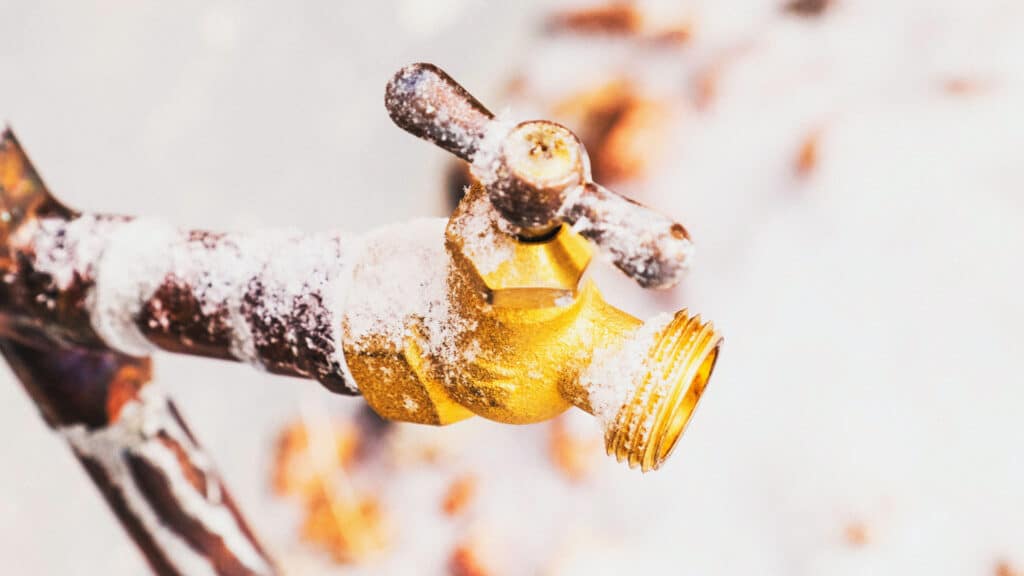
How Do You Winterize Pipes?
How to Winterize Your Pipes
- Insulate Your Pipes.
- Disconnect Exterior Hoses.
- Shut Off the Main Water Valve.
- Blow Excess Air Out of Your Pipes.
- Drain Your Toilets and Water Heater.
Winterizing pipes is a crucial step in protecting your plumbing system from freezing temperatures during the winter months. Here’s a step-by-step guide on how to winterize pipes effectively:
Identify Vulnerable Areas
Start by locating all the vulnerable areas where pipes are exposed to cold air. This includes unheated basements, crawl spaces, attics, garages, and exterior walls. Take note of any exposed pipes in these areas that may need insulation.
Insulate Exposed Pipes
Insulate the exposed pipes using pipe insulation sleeves, heat tape, or foam insulation. Wrap the insulation material around the pipes, ensuring a snug fit. Pay extra attention to areas where pipes meet exterior walls or enter the house, as these are more susceptible to freezing. Proper insulation helps retain heat and prevents freezing.
Seal Air Leaks
Check for any air leaks near the pipes and seal them. Use caulk or insulation foam to seal gaps around pipes where cold air may enter. By eliminating drafts and sealing air leaks, you can help maintain a warmer environment around the pipes.
Disconnect Outdoor Hoses
Disconnect all outdoor hoses from faucets and drain them thoroughly. Leaving hoses connected can trap water in the pipes and lead to freezing. Store the hoses in a dry place for the winter season.
Shut Off Exterior Faucets
Locate the shut-off valve for your exterior faucets and turn them off. This prevents water from flowing to the outdoor faucets, reducing the risk of freezing. Open the faucets to drain any remaining water, ensuring they are completely empty.
When Should I Start Winterizing My House’s Plumbing?
The timing for winterizing your house’s plumbing depends on the climate in your region and the anticipated arrival of freezing temperatures. It is generally recommended to start the winterization process before the onset of consistently cold weather. Here are some factors to consider when deciding when to begin winterizing your house’s plumbing:
Local Climate
Familiarize yourself with the climate patterns in your area. If you live in a region with early or severe winters, it is advisable to start winterizing your plumbing earlier. Areas with milder climates may allow for a later start, but it is still important to be prepared before freezing temperatures become a regular occurrence.
Weather Forecasts
Monitor weather forecasts regularly to stay informed about potential drops in temperatures. Keep an eye out for cold fronts or periods of sustained freezing temperatures. If such weather is predicted, it is a clear indication that it’s time to start the winterization process.
Historical Data
Consider the historical weather patterns in your area. If previous winters have seen early or unexpected freezes, it is wise to err on the side of caution and start the winterization process sooner rather than later.
Plumbing Vulnerabilities
Evaluate the vulnerability of your plumbing system. If you have identified specific areas that are more prone to freezing, such as exposed pipes in unheated areas or outdoor faucets, it is best to start the winterization process well in advance to ensure ample time for proper insulation and protection.
In general, it is recommended to start winterizing your house’s plumbing at least a few weeks before the first anticipated freeze. This allows sufficient time to gather the necessary materials, schedule any professional assistance if needed, and thoroughly complete all the required winterization tasks.
What Steps Should I Take To Winterize My Plumbing?
Winterizing your plumbing is an important step to protect your pipes and plumbing fixtures from freezing temperatures. By following these steps, you can minimize the risk of frozen pipes and potential water damage:
Insulate Exposed Pipes
Identify any exposed pipes in unheated areas such as basements, crawl spaces, or attics. Insulate them using pipe insulation sleeves, heat tape, or foam insulation. Wrap the insulation material around the pipes, ensuring a snug fit. Pay extra attention to areas where pipes meet exterior walls or enter the house, as these are more susceptible to freezing.
Seal Air Leaks
Check for any air leaks near the pipes and seal them. Use caulk or insulation foam to seal gaps around pipes where cold air may enter. By eliminating drafts and sealing air leaks, you can help maintain a warmer environment around the pipes.
Disconnect Outdoor Hoses
Disconnect all outdoor hoses from faucets and drain them thoroughly. Leaving hoses connected can trap water in the pipes and lead to freezing. Store the hoses in a dry place for the winter season.
Shut Off Exterior Faucets
Locate the shut-off valve for your exterior faucets and turn them off. This prevents water from flowing to the outdoor faucets, reducing the risk of freezing. The faucets to drain any remaining water, ensuring they are completely empty.
Open Cabinet Doors
Open cabinet doors under sinks to allow warm air to circulate around the pipes. This helps maintain a consistent temperature and reduces the chances of pipes freezing.
Maintain Indoor Temperature
Keep your home heated to a consistent temperature, especially during extremely cold nights. Set your thermostat to a temperature that will prevent freezing in the interior pipes. Even if you are away, it’s important to ensure that the temperature does not drop below freezing.
Irrigation and Swimming Pool Systems
If you have an irrigation system or swimming pool supply lines, drain the water from these systems before winter. Follow the manufacturer’s instructions for proper drainage to prevent any residual water from freezing and causing damage.
Backup Power Supply
Consider having a backup power supply or generator in case of power outages during winter storms. A power outage can lead to a loss of heat, making it more likely for your pipes to freeze.
By taking these steps to winterize your plumbing, you can safeguard your pipes, fixtures, and water supply from freezing temperatures. It is important to start the process early and ensure that all necessary measures are in place before the onset of consistently cold weather. If you are unsure or need assistance, consult a professional plumber for guidance tailored to your specific plumbing system.
Why Is It Important To Winterize A House’s Plumbing?
Winterizing a house’s plumbing is crucial for several reasons, as it helps protect the plumbing system from freezing temperatures and potential damage. Here are some key reasons why winterizing your house’s plumbing is important:
Prevent Frozen Pipes
The primary reason for winterizing is to prevent frozen pipes. When water inside the pipes freezes, it expands and exerts tremendous pressure on the pipe walls. This pressure can cause pipes to crack, rupture, or burst, leading to leaks and water damage. By winterizing, you insulate the pipes and protect them from freezing, avoiding costly repairs and potential flooding.
Avoid Water Supply Disruptions
Frozen pipes can result in a complete loss of water supply to your home. This can be highly inconvenient, especially during the cold winter months when access to water is essential for daily activities. Winterizing your plumbing helps maintain a consistent water supply by preventing freezing and ensuring uninterrupted access to water.
Protect Plumbing Fixtures
Winterizing not only safeguards your pipes but also protects other plumbing fixtures. Faucets, outdoor spigots, irrigation systems, and swimming pool supply lines are all vulnerable to freezing temperatures. By taking the necessary steps to winterize, such as disconnecting and draining outdoor hoses, shutting off exterior faucets, and insulating fixtures, you can prevent damage and extend the lifespan of these components.
Minimize Costly Repairs
Dealing with burst pipes and water damage can be financially burdensome. Repairing or replacing damaged pipes, fixing water leaks, and addressing water damage to your property can be expensive. Winterizing your plumbing is a proactive measure that can save you from these costly repairs and the associated hassle.
Maintain Home Safety
Frozen pipes can lead to water leaks and flooding, which can pose safety risks to your home and its occupants. Water damage can weaken structures, promote mold growth, and damage belongings. By winterizing your plumbing, you reduce the likelihood of these risks, ensuring a safe and secure living environment.
Overall, winterizing your house’s plumbing is a preventive measure that protects your plumbing system, ensures a consistent water supply, and minimizes the risk of costly repairs and potential safety hazards. It is an essential step in preparing your home for the winter season and maintaining its functionality and integrity.
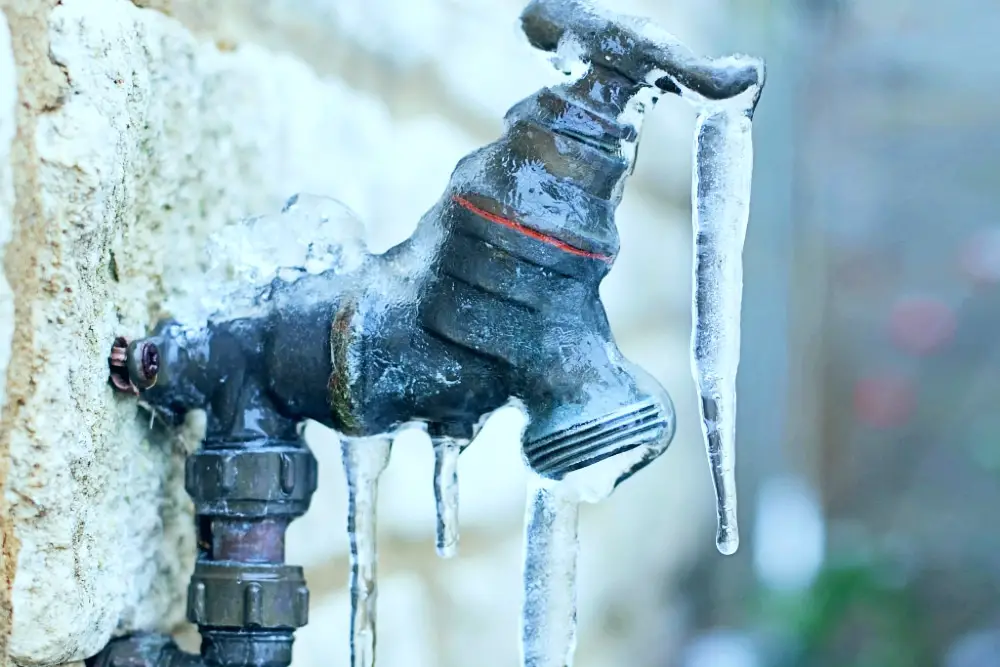
Conclusion
Winterizing your house plumbing is a critical task to protect your plumbing system from freezing temperatures and potential damage. By following the necessary steps, you can ensure a smoothly functioning plumbing system throughout the winter season and avoid costly repairs and water damage.
The process of winterizing your house plumbing involves several key measures. It starts with identifying vulnerable areas where pipes are exposed to cold air and properly insulating them using insulation sleeves, heat tape, or foam insulation. Shutting off the water supply to exterior faucets, disconnecting and draining garden hoses, and insulating outdoor fixtures are essential to prevent freezing and potential burst pipes.
Indoor plumbing can also be winterized by opening cabinet doors under sinks to allow warm air circulation, maintaining a consistent temperature throughout the house, and considering a backup power supply or generator to prevent heating system failure during power outages.
Taking the time to winterize your plumbing is essential to prevent frozen pipes, water supply disruptions, and costly repairs. It helps protect plumbing fixtures, such as faucets, irrigation systems, and swimming pool supply lines, from damage caused by freezing temperatures. Additionally, winterizing ensures the safety of your home by minimizing the risk of water leaks, flooding, and potential hazards.



